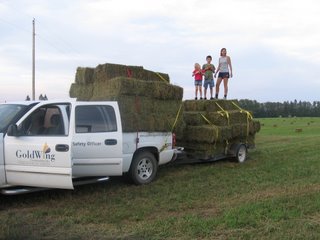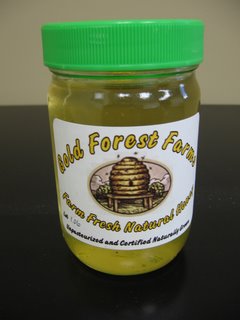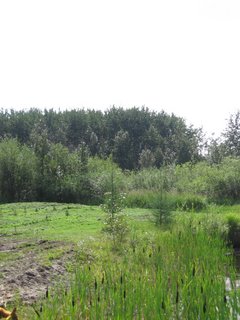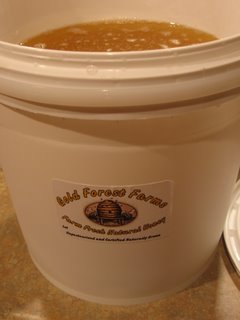
This is the first farrowing hut I built. It functions nicely, but with my really big sows, it is slightly undersized. It is approximately 8' x 6'. For a gilt or a younger sow, it would work perfectly. Still though, it is the only one I have at the moment and will have to make due for at least one more farrowing. I used the Ford tractor "the N" to drag the hut back to the yard from the Deer Field over the weekend. It was in need of some repair from the time that I dragged it out to the Deer Field! I built a transport skid for it and that works a little better instead of just dragging it by itself. When I built the hut, I did install small skids on the bottom but I have discovered that they are much too small for my rough ground.
When the hut was first constructed, I considered a few things. Number one, I wanted a slightly assymetric design to the hut. I wanted more of an angle on one side so that the piglets would have more room to get out of the way. With the slope of the roof, the sow is restricted by height in trying to lie down right against the wall...did that make sense to you?! For instance, if the wall were vertical, there would be no restriction to her laying right up against the wall and squishing her pigs. With the sharper slope, the pigs can squeeze up against the wall and escape being crushed when 'Mom' comes in to rest or nurse.
The other consideration I had was the fact that sows with very young piglets are very protective of their young and won't hesitate to come at you fast if you try to handle them right in front of her nose. I decided to hinge one side of the roof to allow me to sneak peeks at the piglets or to grab them when I need to without the sow being able to get me. She enters from the flaps at the front of the hut and typically sleeps with her nose facing the front. If I open the hinged roof slightly, I can gain access to the piglets if I have to. It works well enough. In warm weather, I can also prop the roof open to allow for ventilation.
The hut has no floor in it. The sow, when she is ready to give birth, will gather many mouthfulls' of straw and build her nest within the hut. Once the hut is no longer being used, I simply drag it to another location where it is needed.

















